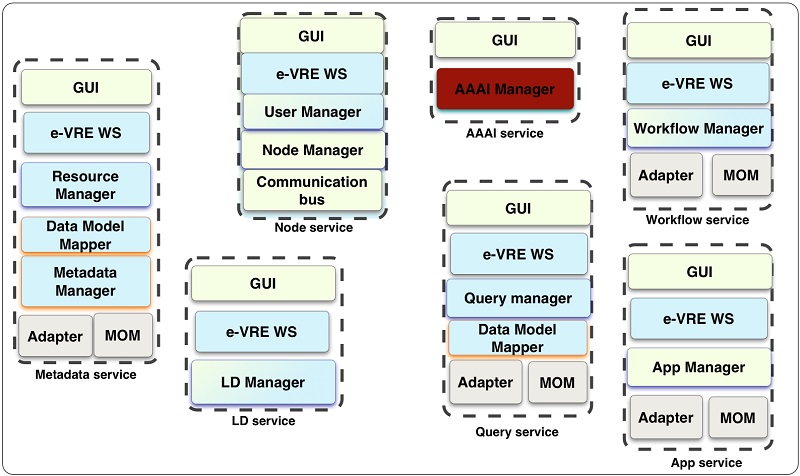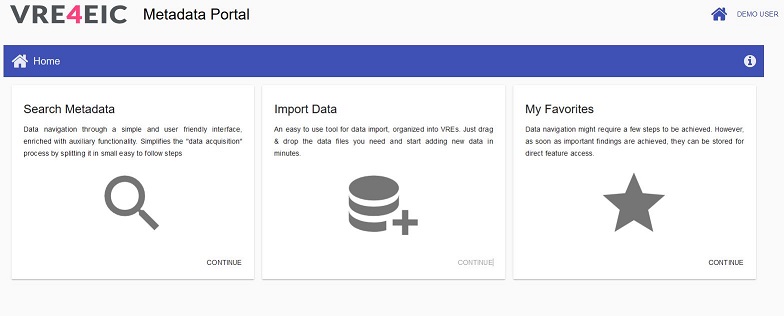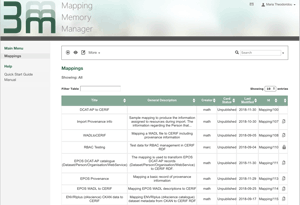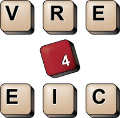Software
e-VRE provides a comfortable homogeneous interface for users by virtualising access to the heterogeneous datasets, software services, resources of the e-RIs and also provides collaboration/communication facilities for users to improve research communication. Finally it provides access to research management /administrative facilities so that the end-user has a complete research environment.
eVRE technical architecture
An approach based on Microservices has been chosen. As a result, the building blocks of the Technical Architecture are autonomous services cooperating with each other to implement the functional areas.

e-VRE software

The source code is available on GitHub. It can be downloaded and re-used according to Apache V2 license. Building blocks technical design is described in Deliverable 3.5, the installation manual is reported in the appendix of this deliverable.
Demonstrators
Common Reference Prototype
Metadata Portal

The Metadata Portal is the platform that facilitates the exploration, discovery and management of VRE4EIC catalogue. Available at http://v4e-hub.isti.cnr.it:8099/#!/login
Mapping Memory Manager - 3M

The VRE4EIC Mapping Memory Manager - 3M is a web application suite containing several software sub-components and exploiting several external services. Its main functionality is to assist users during the mapping definition process, using a human-friendly user interface and a set of sub-components that either suggest or validate the user input. The deployment of the VRE4EIC 3M instance contains all the mappings done during the VRE4EIC project.
Documentation
The detailed specification of the interfaces of the components can be found in VRE4EIC D3.1 Architecture design 2016
The description of the Building Blocks is available in VRE4EIC D3.3
The source code is released under the Apache License, Version 2.0 [ALv2]
